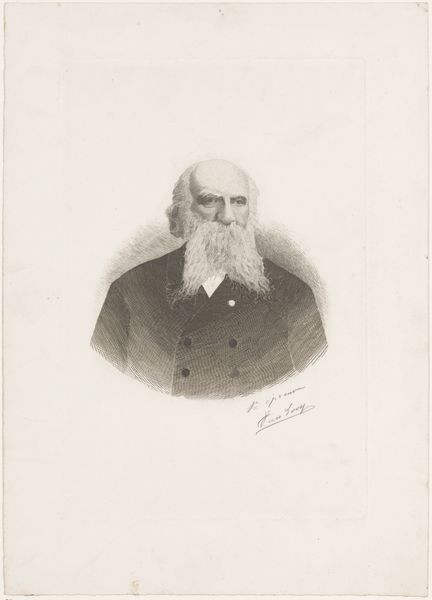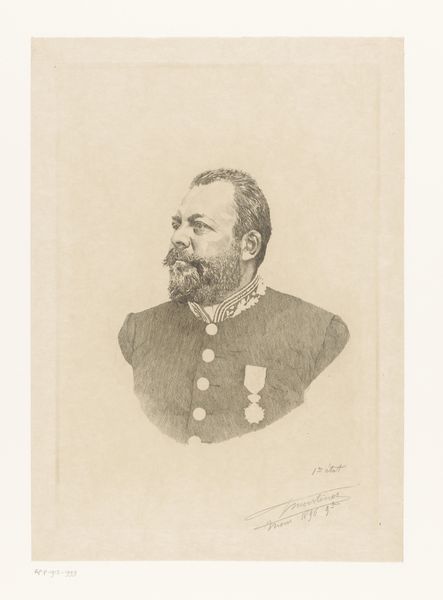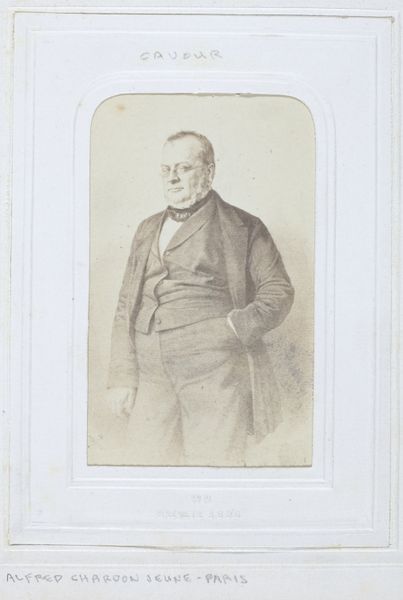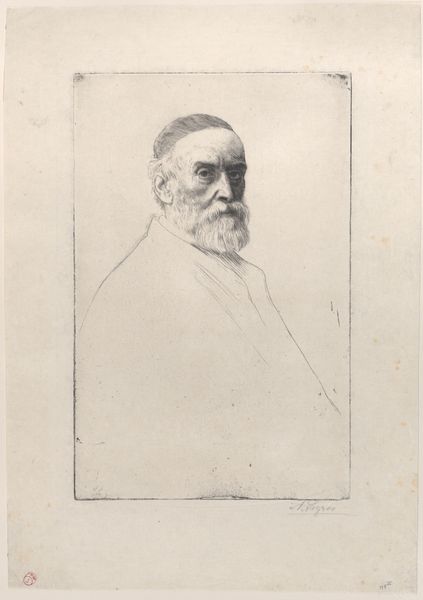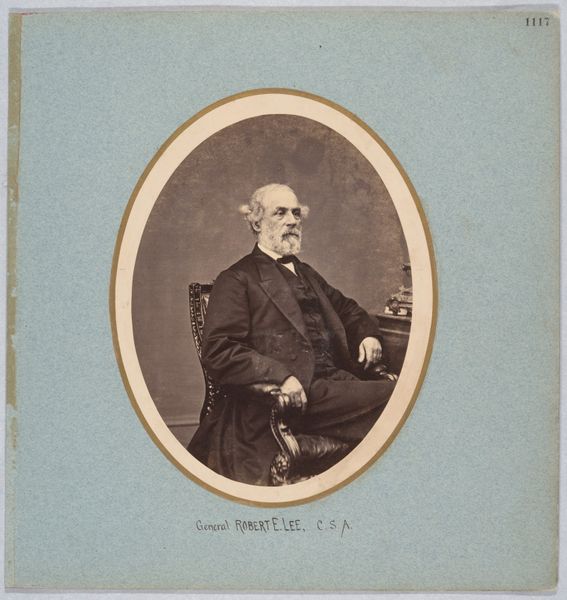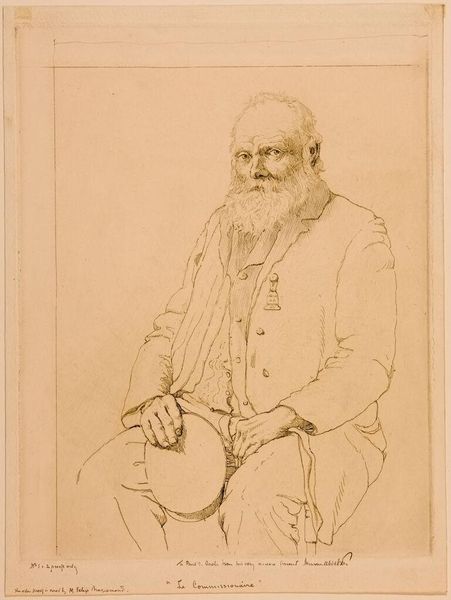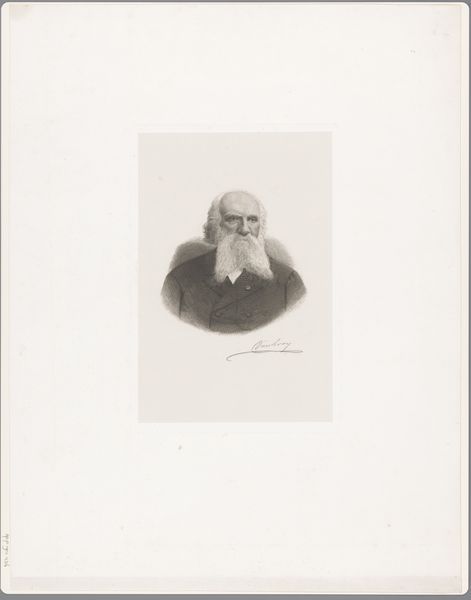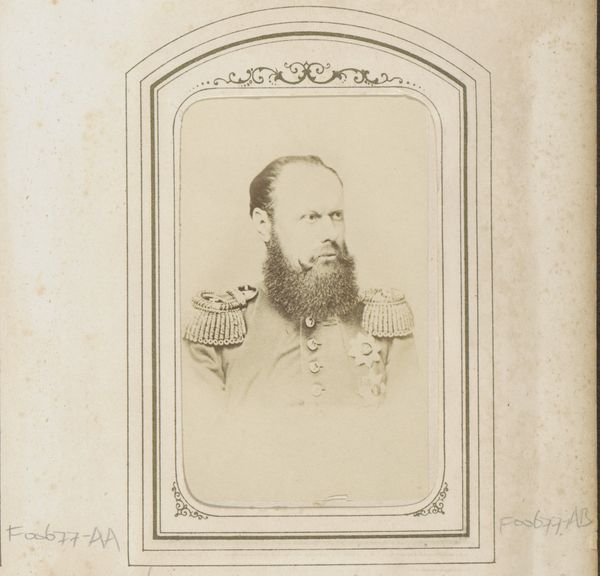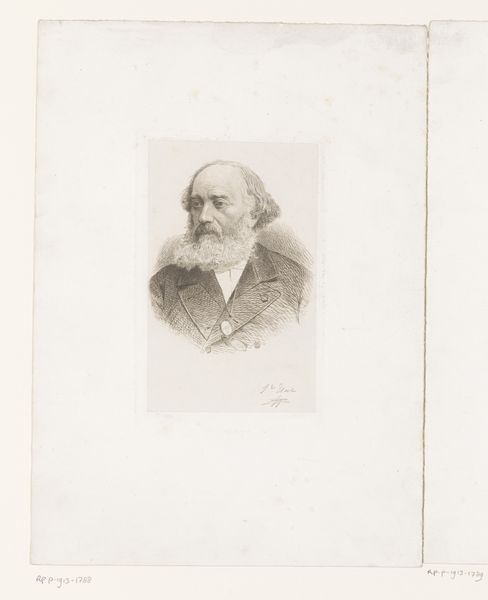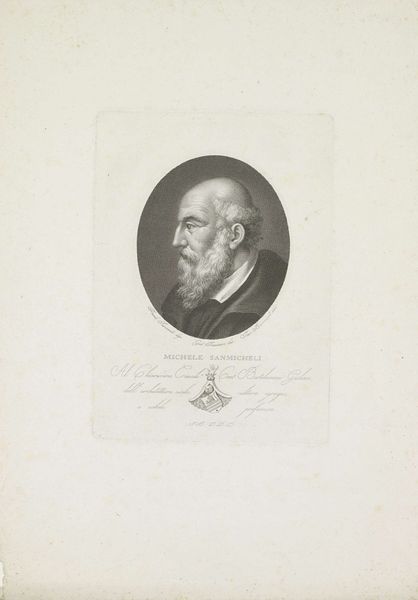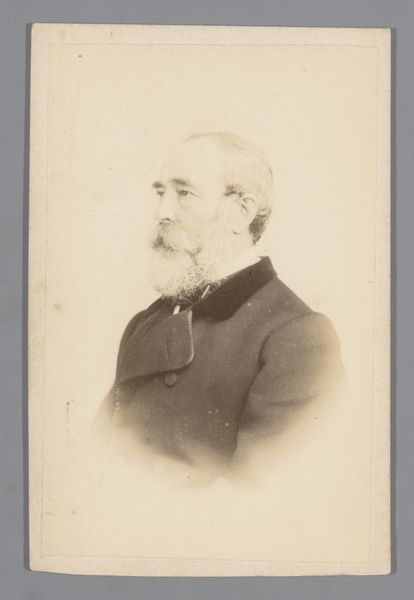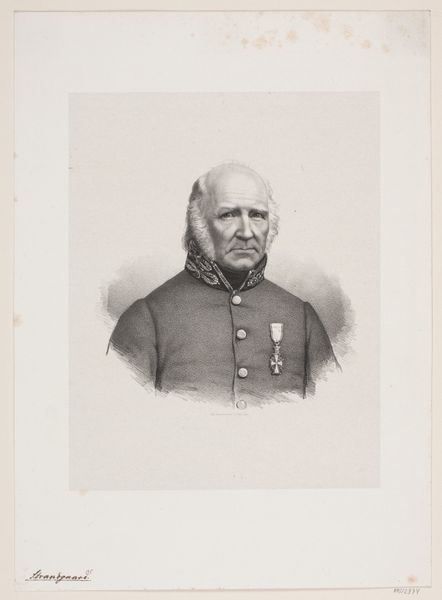
Ældre gråskægget, uniformeret mand: Jernbanedirektør Gustav Skram 1856 - 1935
0:00
0:00
drawing, print, engraving
#
portrait
#
pencil drawn
#
drawing
# print
#
pencil drawing
#
portrait drawing
#
engraving
Dimensions: 95 mm (height) x 85 mm (width) (bladmaal)
Editor: Here we have an engraving, "Ældre gråskægget, uniformeret mand: Jernbanedirektør Gustav Skram", which roughly translates to "Older grey-bearded, uniformed man: Railway director Gustav Skram" by Herman Rudolf Müller, dating from between 1856 and 1935. It’s stark and feels very formal. What’s your take? Curator: What stands out is the process. Consider the labor involved in producing an engraving versus, say, a painted portrait. The repetitive, meticulous carving required to create this image on a metal plate speaks volumes about the value placed on representation and its dissemination. How might the relative ease of mass-producing engravings, compared to unique painted portraits, impact access to and perception of power? Editor: That’s interesting; I hadn't thought about it that way. I was more focused on the individual, Gustav Skram, and his importance. But now I’m wondering about the societal role of the engraver. Curator: Exactly! This isn’t just a depiction of an individual; it’s a product of its time. Think about the industrialization occurring – the very railroads Skram oversaw were transforming society. How did this mode of image-making influence that change? Editor: So you’re saying the print itself, as a mass-produced object connected to the rise of industry, shaped perceptions just as much as the image of the Railway Director did. Curator: Precisely. And consider the consumption of these prints. Where were they displayed? Who had access to them? This engraving participates in constructing and reinforcing social hierarchies, normalizing the image of authority for wider circulation. Editor: That’s given me a totally new way to appreciate not just the artwork itself, but how it circulated. Thanks! Curator: Indeed. Looking closely at material production offers rich insights into the social fabric of the time.
Comments
No comments
Be the first to comment and join the conversation on the ultimate creative platform.
